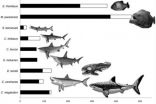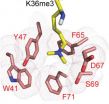(Press-News.org) Human corneal endothelial cells (HCEnCs) form a monolayer of hexagonal cells whose main function is to maintain corneal clarity by regulating corneal hydration. Cell loss due to aging or corneal endothelial disorders, such as Fuchs dystrophy, can lead to cornea edema and blindness, resulting in the need for cornea transplants.
Studying human corneal endothelium has been difficult for cell biologists because limited cellular model systems exist and have significant drawbacks. The major drawback is that HCEnC cells do not divide and there is a limited source of these cells both for patient transplantation and for study in the laboratory. This field of study is now easier.
Scientists from the Schepens Eye Research Institute, Mass. Eye and Ear, have developed of HCENC-21 and HCEnC-21T, two novel model systems for human corneal endothelium. Their findings, Telomerase Immortalization of Human Corneal Endothelial Cells Yield Functional Hexagonal Monolayers, are online in the PLOS ONE.
A research team led by Ula Jurkunas, M.D., developed first-of their kind model systems for human corneal endothelium.
"These models mimic very well the critical characteristics and functionalities known from the tissue in the eye," Dr. Jurkunas said. "They also fulfill essential technical requirements, e.g. indefinite number of and a high rate of cell division, to be a powerful tool. They will enable cell biologists to more reliably study human corneal endothelium in health and disease. The ability to enhance HCEnC cell self renewal and growth opens a new window of development of novel regenerative therapies for corneal swelling, hopefully reducing the need for corneal transplantation in the future."
###
Link to paper: http://www.plosone.org/article/info%3Adoi%2F10.1371%2Fjournal.pone.0051427. END
Development of new corneal cell line provides powerful tool
2 novel model systems for human corneal endothelium discovered
2012-12-27
ELSE PRESS RELEASES FROM THIS DATE:
New technique catalogs lymphoma-linked genetic variations
2012-12-27
As anyone familiar with the X-Men knows, mutants can be either very good or very bad — or somewhere in between. The same appears true within cancer cells, which may harbor hundreds of mutations that set them apart from other cells in the body; the scientific challenge has been to figure out which mutations are culprits and which are innocent bystanders. Now, researchers at Johns Hopkins Medicine have devised a novel approach to sorting them out: they generated random mutations in a gene associated with lymphoma, tested the proteins produced by the genes to see how they ...
Ability to metabolize tamoxifen affects breast cancer outcomes, Mayo Clinic-led study confirms
2012-12-27
ROCHESTER, Minn. -- For nearly a decade, breast cancer researchers studying the hormone therapy tamoxifen have been divided as to whether genetic differences in a liver enzyme affect the drug's effectiveness and the likelihood breast cancer will recur. A new study by researchers from the Mayo Clinic Cancer Center and the Austrian Breast and Colorectal Cancer Study Group provides evidence that genetic differences in the enzyme CYP2D6 play a key role in how well tamoxifen works.
"Our findings confirm that, in early breast cancer treated with tamoxifen, genetic alterations ...
Immune system changes may drive aggressiveness of recurrent tumors
2012-12-27
PHILADELPHIA – Nearly half of the 700,000 cancer patients who undergo surgical removal of a primary tumor each year suffer a recurrence of their disease at some point, and many of those patients will eventually die from their disease. The traditional view of recurrent tumors is that they are resistant to therapy because they've acquired additional genetic mutations that make them more aggressive and impervious to drugs. Now, however, researchers at the Perelman School of Medicine at the University of Pennsylvania show in an animal model that the enhanced aggressiveness ...
Piranha kin wielded dental weaponry even T. rex would have admired
2012-12-27
Taking into consideration its size, an ancient relative of piranhas weighing about 20 pounds delivered a bite with a force more fierce than prehistoric whale-eating sharks, the four-ton ocean-dwelling Dunkleosteus terrelli and – even – Tyrannosaurus rex.
Besides the force of the bite, Megapiranha paranensis appears to have had teeth capable of shearing through soft tissue the way today's piranhas do, while also being able to pierce thick shells and crack armoring and bones, according to Stephanie Crofts, a University of Washington doctoral student in biology.
"If our ...
Doctors call for evidence-based appropriateness criteria for elective procedures
2012-12-27
Many of the most common inpatient surgeries in the United States are performed electively. These surgeries are expected to significantly increase with the enactment of the Affordable Care Act. In a new perspectives article, published in the Dec. 27 edition of The New England Journal of Medicine, a team of Weill Cornell Medical College researchers are recommending the nation's health care leaders and medical community join forces to establish evidence-based appropriateness criteria to determine which patients are most in need of elective procedures, such as joint replacement ...
UNC research uncovers new insight into cell development and cancer
2012-12-27
CHAPEL HILL - Long-standing research efforts have been focused on understanding how stem cells, cells capable of transforming into any type of cell in the body, are capable of being programmed down a defined path to contribute to the development of a specific organ like a heart, lung, or kidney. Research from the University of North Carolina at Chapel Hill School of Medicine has shed new light on how epigenetic signals may function together to determine the ultimate fate of a stem cell.
The study, published December 27, 2012 by the journal Molecular Cell, implicates ...
Genetic sequencing breakthrough to aid treatment for congenital hyperinsulinism
2012-12-27
Congenital hyperinsulinism is a genetic condition where a baby's pancreas secretes too much insulin. It affects approximately one in 50,000 live births and in severe cases requires the surgical removal of all or part of the pancreas.
Researchers at the University of Exeter Medical School are the first in the world to utilise new genetic sequencing technology to sequence the entirety of a gene in order to identify mutations that cause hyperinsulinism. Previously, existing technology limited such sequencing to only part of the coding regions of the gene which meant that ...
Cellular fuel gauge may hold the key to restricting cancer growth
2012-12-27
Researchers at McGill University have discovered that a key regulator of energy metabolism in cancer cells known as the AMP-activated protein kinase (AMPK) may play a crucial role in restricting cancer cell growth. AMPK acts as a "fuel gauge" in cells; AMPK is turned on when it senses changes in energy levels, and helps to change metabolism when energy levels are low, such as during exercise or when fasting. The researchers found that AMPK also regulates cancer cell metabolism and can restrict cancer cell growth.
The discovery was made by Russell (Rusty) Jones, an assistant ...
Stowers study hints that stem cells prepare for maturity much earlier than anticipated
2012-12-27
KANSAS CITY, MO—Unlike less versatile muscle or nerve cells, embryonic stem cells are by definition equipped to assume any cellular role. Scientists call this flexibility "pluripotency," meaning that as an organism develops, stem cells must be ready at a moment's notice to activate highly diverse gene expression programs used to turn them into blood, brain, or kidney cells.
Scientists from the lab of Stowers Investigator Ali Shilatifard, Ph.D., report in the December 27, 2012 online issue of Cell that one way cells stay so plastic is by stationing a protein called Ell3 ...
Evidence contradicts idea that starvation caused saber-tooth cat extinction
2012-12-27
In the period just before they went extinct, the American lions and saber-toothed cats that roamed North America in the late Pleistocene were living well off the fat of the land.
That is the conclusion of the latest study of the microscopic wear patterns on the teeth of these great cats recovered from the La Brea tar pits in southern California. Contrary to previous studies, the analysis did not find any indications that the giant carnivores were having increased trouble finding prey in the period before they went extinct 12,000 years ago.
The results, published on ...
LAST 30 PRESS RELEASES:
Scalable and healable gradient textiles for multi‑scenario radiative cooling via bicomponent blow spinning
Research shows informed traders never let a good climate crisis go to waste
Intelligent XGBoost framework enhances asphalt pavement skid resistance assessment
Dual-function biomaterials for postoperative osteosarcoma: Tumor suppression and bone regeneration
New framework reveals where transport emissions concentrate in Singapore
NTP-enhanced lattice oxygen activation in Ce-Co catalysts for low-temperature soot combustion
Synergistic interface engineering in Cu-Zn-Ce catalysts for efficient CO2 hydrogenation to methanol
COVID-19 leaves a lasting mark on the human brain
Scientists use ultrasound to soften and treat cancer tumors without damaging healthy tissue
Community swimming program for Black youth boosts skills, sense of belonging, study finds
Specific depressive symptoms in midlife linked to increased dementia risk
An ‘illuminating’ design sheds light on cholesterol
Who is more likely to get long COVID?
Study showcases resilience and rapid growth of “living rocks”
Naval Research Lab diver earns Office of Naval Research 2025 Sailor of the Year
New Mayo-led study establishes practical definition for rapidly progressive dementia
Fossil fuel industry’s “climate false solutions” reinforce its power and aggravate environmental injustice
Researchers reveal bias in a widely used measure of algorithm performance
Alcohol causes cancer. A study from IOCB Prague confirms damage to DNA and shows how cells defend against it
Hidden viruses in wastewater treatment may shape public health risks, study finds
Unlock the power of nature: how biomass can transform climate mitigation
Biochar reshapes hidden soil microbes that capture carbon dioxide in farmland
Reducing saturated fat intake shows mortality benefit, but only in high-risk individuals
Manta rays create mobile ecosystems, study finds
Study: Mixed results in using lipoic acid to treat progressive multiple sclerosis
Norbert Holtkamp appointed director of Fermi National Accelerator Laboratory
New agentic AI platform accelerates advanced optics design
Biologists discover neurons use physical signals — not electricity — to stabilize communication
Researchers discover that a hormone can access the brain by hitchhiking
University of Oklahoma researcher awarded funding to pursue AI-powered material design
[Press-News.org] Development of new corneal cell line provides powerful tool2 novel model systems for human corneal endothelium discovered



